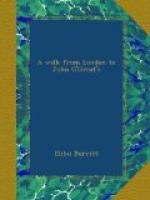At nearly every subsequent national exhibition, Mr. Webb carried off the best prizes for Southdowns. At Dundee, in 1843, the Highland Society paid him the compliment of having the likenesses of his sheep taken for its museum in Edinburgh. He only received two checks in these competitions after 1840, and these he rectified and overcame in an interesting way. The first took place at the great meeting at Exeter, in 1850, and the second at Chelmsford, in 1856. On both of these occasions he was convinced that the judges had not done justice to the qualities of his animals, and he resolved to submit their judgment to a court of errors, or to the decision of a subsequent meeting of the society. So, in 1851, he presented the unsuccessful candidate at Exeter to the meeting at Windsor, and took the first prize for it. This fully reversed the Exeter verdict. He resorted to the same tribunal to set him right in regard to his apparent defeat at Chelmsford, in 1856. Next year he presented the ram beaten there to the Salisbury meeting, and another jury gave the animal the highest meed of merit.
It was at the zenith of his fame as a sheep-breeder that Mr. Webb “assisted,” as the French say, at the Universal Exposition at Paris, in 1855. Here his beautiful animals excited the liveliest admiration. The Emperor came himself to examine them, and expressed himself highly pleased at their splendid qualities. It was on this occasion that Mr. Webb presented to the Emperor his prize ram, for which, probably, he had refused the largest sum ever offered for a single animal of the same race, or 500 guineas ($2,500). The Emperor accepted the noble present, fully appreciating the spirit in which it was offered, and some time afterwards sent the generous breeder a magnificent candelabra, of solid silver, representing a grand, old English oak, with a group of horses shading themselves under its branches. This splendid token of the Emperor’s regard is only one of the numerous trophies and souvenirs that embellish the farmer’s home at Babraham, and which his children and remoter posterity will treasure as precious heirlooms.
If Mr. Webb did not originate, he developed a system of usefulness into a permanent and most valuable institution, which, perhaps, will be the most novel to American stock-raisers. Having, by a long course of scientific observations and experiments, fixed the qualities he desired to give his Southdowns; having brought them to the highest perfection, he now adopted a system which would most widely and cheaply diffuse the race thus cultivated all over the civilized world. He instituted an annual ram-letting, which took place in the month of July. This occasion constituted an important event to the great agricultural world. A few Americans have been present and witnessed the proceedings of these memorable days, and they know the interest attaching to them better than can be inferred from any description. M. De La Trehonnais, in the “Revue Agricole de l’Angleterre,” thus sketches some of the incidents and aspects of the occasion:—




